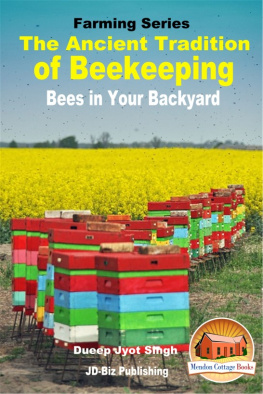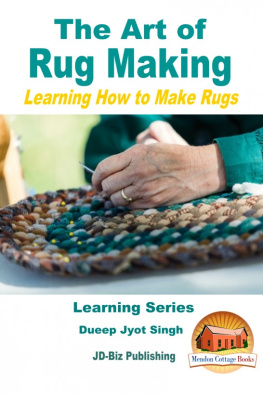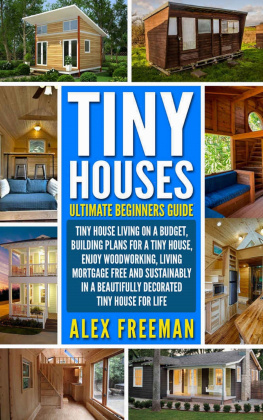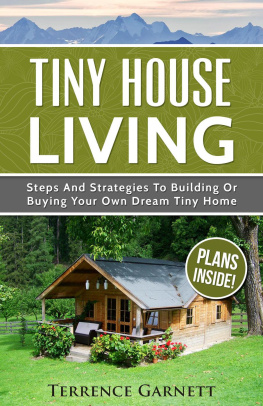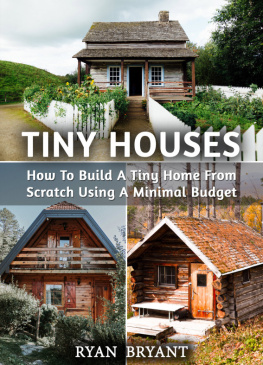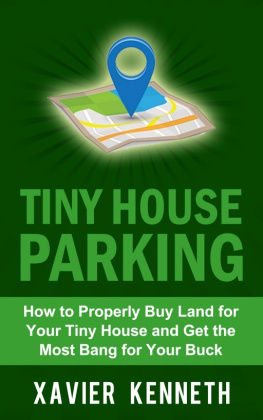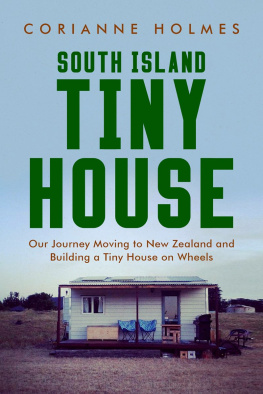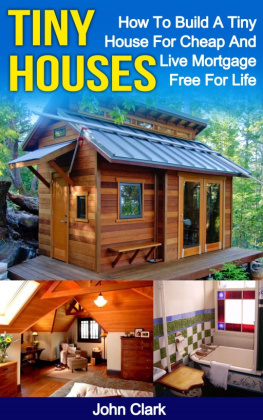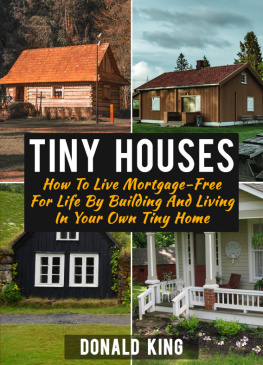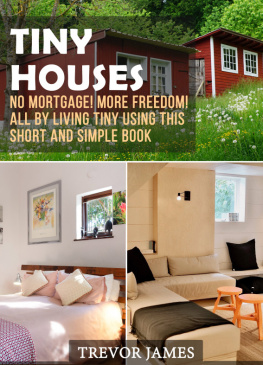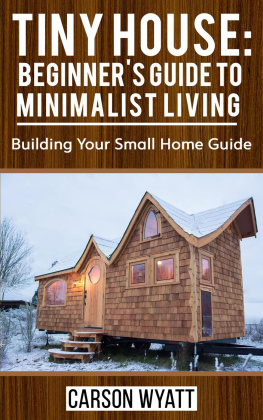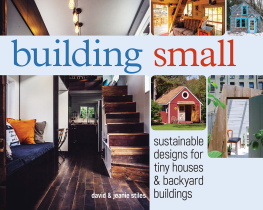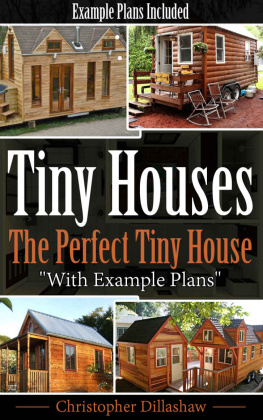Disaster Management The Tiny House Movement
Tiny House Micro Shelters to Build: TraditionalDesigns in Survivalist Conditions
PLANS INCLUDED

Dueep Jyot Singh
Disaster Management Series
Mendon Cottage Books
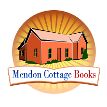
JD-Biz Publishing
Download FreeBooks!
http://MendonCottageBooks.com
All Rights Reserved.
No part of this publication may be reproducedin any form or by any means, including scanning, photocopying, orotherwise without prior written permission from JD-Biz CorpCopyright 2016
All Images Licensed by Fotolia, Pixabay, and123RF.
Disclaimer
The information is this book is provided forinformational purposes only. The information is believed to beaccurate as presented based on research by the author.
The author or publisher is not responsiblefor the use or safety of any procedure or treatment mentioned inthis book. The author or publisher is not responsible for errors oromissions that may exist.
Download FreeBooks!
http://MendonCottageBooks.com
Table of Contents
Introduction
An American friend of mine was talking aboutthe building cost of her house, which was just 2,600 ft. Accordingto her, this was the average space taken by an average Americanfamily in the building of their own houses from scratch. She saidshe had already spent USD 80,000 on the architectural design, andshe had not even begun! When she saw my eyes widen at the costs,she said, What, your houses in your country or anywhere else, arenot so large? And the house building costs do not come in thousandsand thousands of dollars?
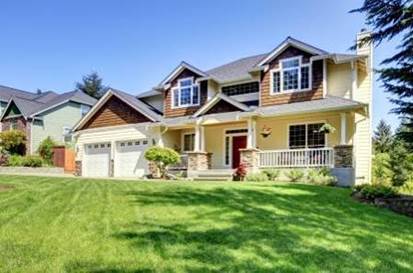
Well, I could tell her that in our countryand in other parts of the World, our built houses especiallycolonial bungalows, ancestral homes/haciendas and I have lived inthem were made on land just under 1 acre and even much more, so Iwas not anyone to talk about 2,600 ft..
Nevertheless, I began to think that a bookwas needed to tell people all about how for millenniums, peoplehave been living in really tiny spaces, in tiny homes, and theyhave managed extremely well.
So this book is going to tell you all aboutsome traditional ways in which you can build a really nice tinyhome. But here you are going to think of a state of mind and apossible situation, where we are in survivalist mode. This tinyhome is a shelter, for the family to protect it from the weather,animal attacks, a place to live in, eat, and sleep, and I am goingto go back to the history of these houses, down the centuries allover the World.
This book is going to give you lots ofinformation on how these houses were built and how can you buildthese houses yourself, especially when you need to know how tobuild a shelter for your family.
But before that, you need to have a reallyparticular mindset, which is not so common in the 21st century.This is the mindset of the philosophers of ancient times, thesages, the wise men, and the spiritually inclined, whose mainphilosophy of life was do not get attached to material things,and God forbid, if it is apocalypse time, you are definitely goingto leave 99.9% of the things that you have collected throughoutyour life behind.
So this book can be considered to be a bit ofknowledge, philosophy, ancient ways of living, while also givingyou information about small houses, and how people have managed tolive in them for millenniums, and without any cribbing orcomplaining about hey, there is no living space!
I was watching Bruce Williss The FifthElement, and then, when I saw the cityscape of a future city,as imagined by the director and writer, I had to smile. Of coursethere will come a time when people will be leaving in tinyhencoops, high above the ground because space is going to be at apremium.
And they are going to consider living inthose tiny boxes to be a normal part and parcel of their lives,because according to them, it is natural. But we are not living in2250.
We are in the 21st century and luckily, thereare plenty of wide-open spaces, even today, where we can breathethe fresh air, even though man is, as is normal for him trying hislevel best to change the living conditions around him because hedefinitely does not like anything which looks a bit static,natural, or regular. He has to use his own creativity to put hisown slant onto things, to his own supposed requirements, and towhat he thinks is necessary in life to supposedly keep him happy,content, and possibly live a modern and sophisticatedlifestyle.
And that is why I was surprised to see thatso many people in America and also in other more civilizedcountries of the West were fascinated with tiny houses. Havinglived in countries where tiny houses were the rule, instead of theexception, especially in places where it was a question of survivalof the fittest, one naturally thought that this was the normfollowed everywhere in the World!
This book is also going to have a number ofdesigns for your reference, on how you can make your own microhouse a permanent structure or a micro dwelling a traditionalliving structure, depending on the materials you have at hand.
Conceptof Space
Any Westerner, used to wide-open spaces,going to Japan for the first time would immediately say, How can aperson let alone a family, manage to live in such a tiny livingspace? And, naturally, the tiny houses that he saw in other partsof the East, the Orient, and Southeast Asia predominantly wouldbring about a reaction of Get modern, man, use modern items in theconstruction of really large houses, like brick, cement, glass, andother 21st-century building equipment in order to build Goliaths!What is with the bamboo and the paper?

And in return, he would get an inscrutablemysterious Oriental smile telling him you have lots of open spacein your land, but in our particular area, we have to make do withsmall buildings, which you consider buildings in miniature, but weconsider as a normal dwelling unit. Also we have to look at thetopography and the climate of our land. We use bamboo and paperbecause it is the easiest available natural resource in our area.Also, as we are living in an earthquake zone and prone to typhoonsand hurricanes, we need to have buildings which do not do lots ofdamage to the human inhabitants, when disaster strikes.
As I said, there have always been a number ofexamples of ancient architecture and design, which have helpedmankind down the ages to shelter himself from the elements and toraise a family.
So here is some amusing information,especially when you are learning more about tiny dwellings, and youmay ask, well, have you ever lived in a tent, in a hut, in a Bashatent the other name for a tarpaulin tent and do you know of whatyou speak? the answer is going to be a modest Oh yeah. And youcan consider these to be the tiniest of dwellings.
No way do they come even remotely up to themeasurement of what the civilized and modern 21st-centuryhouseholder considers a tiny micro house anything lesser than 500ft.
When I asked my father to give me an estimateof how much 500 ft. was, he said, waving a hand around him aslarge as our drawing room, and a quarter of the dining room, 46m.


